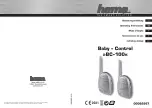
If an error message is displayed indicating a fault with a specific memory module, go to step 12.
4.
Enter System Setup, and check the system memory setting. Make any changes to the memory
settings, if needed.
If the memory settings match the installed memory but the problem still persists, go to step 12.
5.
Turn off the system and attached peripherals, and disconnect the system from the electrical outlet.
6.
Remove the system cover.
7.
Check the memory channels and ensure that they are populated correctly.
NOTE: See the system event log or system messages for the location of the failed memory
module. Reinstall the memory device.
8.
Reseat the memory modules in their sockets.
9.
Install the system cover.
10.
Enter System Setup and check the system memory setting.
If the problem is not resolved, proceed with step 11.
11.
Remove the system cover.
12.
If a diagnostic test or error message indicates a specific memory module as faulty, swap or replace
the module with a known working memory module.
13.
To troubleshoot an unspecified faulty memory module, replace the memory module in the first
DIMM socket with a module of the same type and capacity.
If an error message is displayed on the screen, this may indicate a problem with the installed DIMM
type(s), incorrect DIMM installation, or defective DIMM(s). Follow the on-screen instructions to
resolve the problem.
14.
Install the system cover.
15.
As the system boots, observe any error message that is displayed and the diagnostic indicators on the
front of the system.
16.
If the memory problem persists, repeat step 12 through step 15 for each memory module installed.
Next steps
If the problem persists, see the Getting help section.
Related Links
Getting help
Using system diagnostics
GUID-4A33AA38-CEA4-4BF0-9CA0-7242BB73A6C4
Troubleshooting an internal USB key
Prerequisites
CAUTION: Many repairs may only be done by a certified service technician. You should only
perform troubleshooting and simple repairs as authorized in your product documentation, or as
directed by the online or telephone service and support team. Damage due to servicing that is
not authorized by Dell is not covered by your warranty. Read and follow the safety instructions
that are shipped with your product.
Steps
1.
Enter System Setup and ensure that the
USB key port
is enabled on the
Integrated Devices
screen.
2.
Turn off the system and attached peripherals, and disconnect the system from the electrical outlet.
3.
Remove the system cover.
185









































